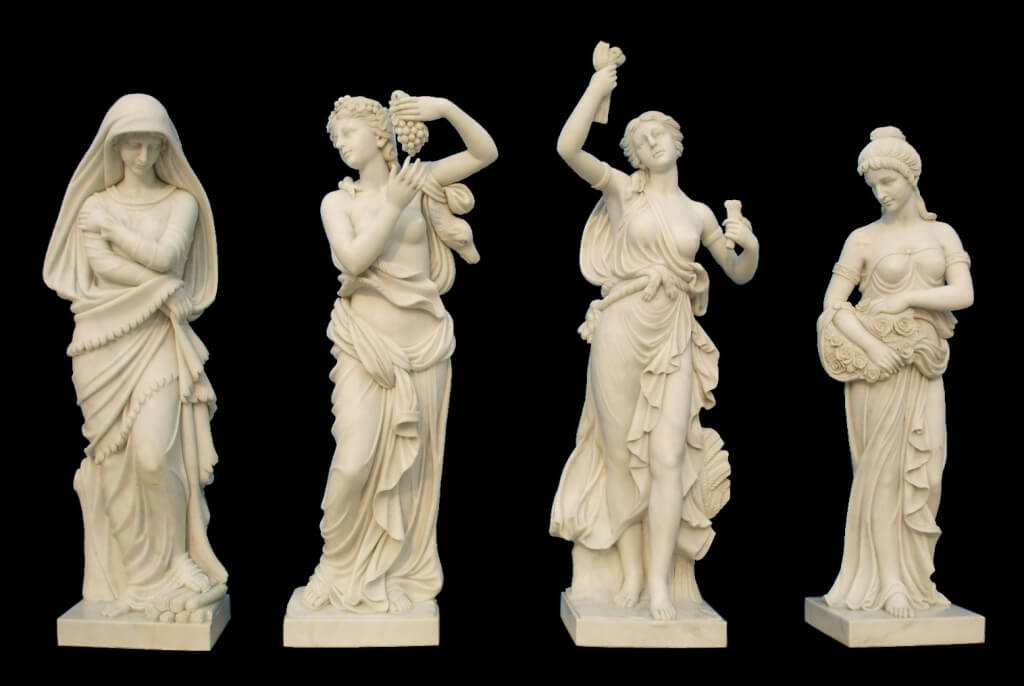When I was first training it was drilled into me that you should never mix the godforms of different traditions. I saw the concept in a Ritual 101 book written by Murray Hope. Some godforms could be mixed and Hope helpfully gave a list.
You could for example mix in Cabbalistic Angels with any Godform system as neither side seemed to mind. Greek and Roman pantheons tended to work ok, but others should be kept apart as mysteries within their cultural tradition and if you mixed Roman with Egyptian you would get a jarring of energy.
At the time it made absolute sense and any rituals I wrote were geared to being either totally Egyptian, Celtic, Babylonian etc. However as my magical researched focused on ancient Alexandria and I started adapting the Greek Magical Paprii for my own use I appear to have thrown that idea out of the window.
It was not a conscious decision, it was just that I started working that way. It was then someone pulled me up with a comment about a written ritual which switched between Roman and Egyptian Gods several times in a single rite and she (quite rightly I had over egged the pudding a bit in that ritual) used the word “jarring” which bought back memories of rules about mixed traditions.
Now I have been mixing godforms in rituals for several years and I have not seen the jarring effect shown by Hope. I have seen a dynamic shown by having two conflicting gods in the same space, which could be seen as jarring (it wasn’t really) but since they were gods from the same tradition that did not really apply. It also does not explain one important fact.
Historically magic mixed religious traditions.
The Greek Magical Papryii with are collection of magical scrolls from the Roman era show Egyptian, Greek, Roman, Sumerian, Babylonian, Syrian Jewish magical systems and gods all tossed into one melting pot.
Take for example this phrase of power which is connected to Typhon. ANLALA LAI GAIA APA DIACHANNA CHORYN
A-lai: could it be Eloah / Eli / Elu, which are variant forms for El, the Jewish God, sometimes linked to the Stars.
Gaia-a: the Greek Earth Goddess.
Pa-dia: it could remember the accusative of pais, which means “baby, child”
Channa: In Hittite the word for mother is Hanna, and this word was so widespread and used that today it is still used by the Turkish: they call “mother” as “anne”. This word was fundamental to me. I thought to the Greek living in the ancient Anatolia: from there there were a lot of mystery cults, and a lot of Hittite gods were used in the Greek theogony. So, there was a link between the Hittite and the Ancient Near East and the Greeks.
Choryn: this word remember the greek word for girl, maid. But it can also be linked to Kyrios, which means Lord.
So, here could be invoked the God of Heaven and the goddess of Hearth, who is child, mother and girl. Not much to do with Typhon…. But Typhon was a child of Gaia he was seen as an air Daemon (so Enlil makes sense). His story was similar to that of an Hittite monster called Ullikummi. So this text could be a hacked Greco-egyptian version of some ancient Anatolian magic.
The ancients believed then that Gods were pretty much the same (even the Jewish YHVH was seen as an aspect of Jove so the idea of mixing them was not alien or wrong.
So where did the idea of mixing traditions being bad come from?
Looking back I can’t find anything like it being mentioned until the 19th century Theosophical movement . There was an idea of root races. The believe was that there were different waves of humanity each representing different degrees of evolution.
The last root race is the Ayran one which his split into subraces, the Hindu, which migrated from the “City of the Bridge” on the white island in the middle of the Gobi inland sea to India in 60,000 BC; the second subrace, the Arabian, which migrated from the “City of the Bridge” to Arabia in 40,000 BC; the third subrace, the Persian, which migrated from the “City of the Bridge” to Persia in 30,000 BC; the fourth subrace, the Celts, which migrated from the “City of the Bridge” to Western Europe beginning in 20,000 BC (the Mycenaean Greeks are regarded as an offshoot of the Celtic subrace that colonized Southeast Europe); and the fifth sub race, the Teutonic, which also migrated from the “City of the Bridge” to what is now Germany beginning in 20,000 BC (the Slavs are regarded as an offshoot of the Teutonic sub race that colonized Russia and surrounding areas. The Jewish race is from the fourth root race and therefore much less developed.
Needless to say this is all bollocks and discounted by modern science, however it was hugely influential on the 20th century occult movement. If these root races existed, then it makes sense not to mix traditions because you are mucking around with different evolutionary currents.
As I have said in my Making Talismans book, all gods are probably anthropomorphic expressions of seven basic divine energies (which the Greeks expressed in vowels and I am inclining towards using colour) so Set will be part of the same ray as Typhon and Mars and any of the Babylonian war gods.
Mixing them to do the same things makes no difference.
However There is SOME truth in the idea. Swapping gods too often in one ritual can cause a headache if over done but it should still be seen as something natural and not jarring.


Comments are closed